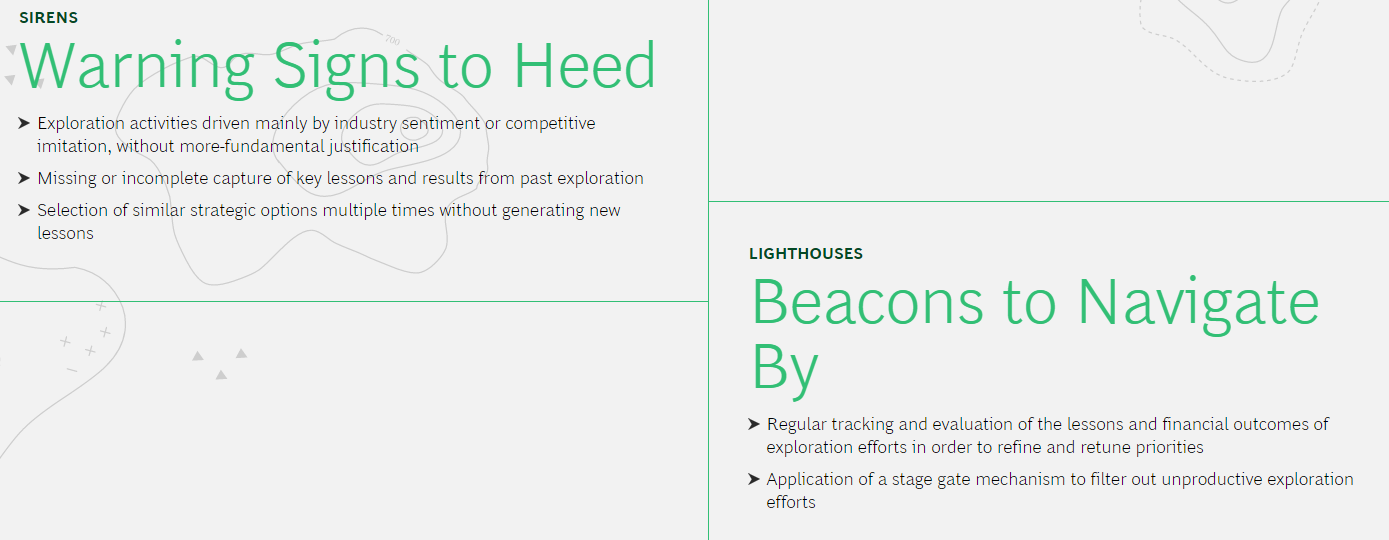Who said consulting was boring?
Boston Consulting Group does a wonderful job of illustrating some of the extremes you find in broken thinking. They use history, anecdotes, and storytelling to show us some of the extremes. These are stories of explorers and pioneers who often did 1 thing right, and many things wrong.
Take a look at BCG’s Atlas of Strategy Traps here.
Strategy = Yes, And. . .
Strategy is not “set it and forget it”. What worked once does not necessarily work forever. So, YES, you should continue to do what works, until it doesn’t. You need to know when to push through the dip (hat tip: Seth Godin) and when there’s a strategic inflection point (hat tip: Andy Grove).
Yes you should do X, AND. . . consider when to do Y. It’s a spectrum of thinking, options, exploration, and emerging strategy. It’s fascinating to look at history and case studies, and that’s what BCG did here.
Definition of the options space
- Combing through the ocean – Defining the option space too broadly
- Backyard exploration – Sticking to the options you already know
Calibration of exploration
- Trapped in the past – Exploiting the same option over and over again
- Perpetual search – Looking for new options without ever adequately exploiting them
Consideration of Available Resources
- Misjudged harshness – Not considering the cost of exploration
- Unleveraged resources – Missing opportunities unnecessarily
Investing in Options
- Drop in the ocean – Big goals and small incremental investments
- Risking the ship – Always going for the big push
Learning from the environment
- Fixed itinerary – Never adapting your methods
- Forgetful wanderer – Always following the latest lead
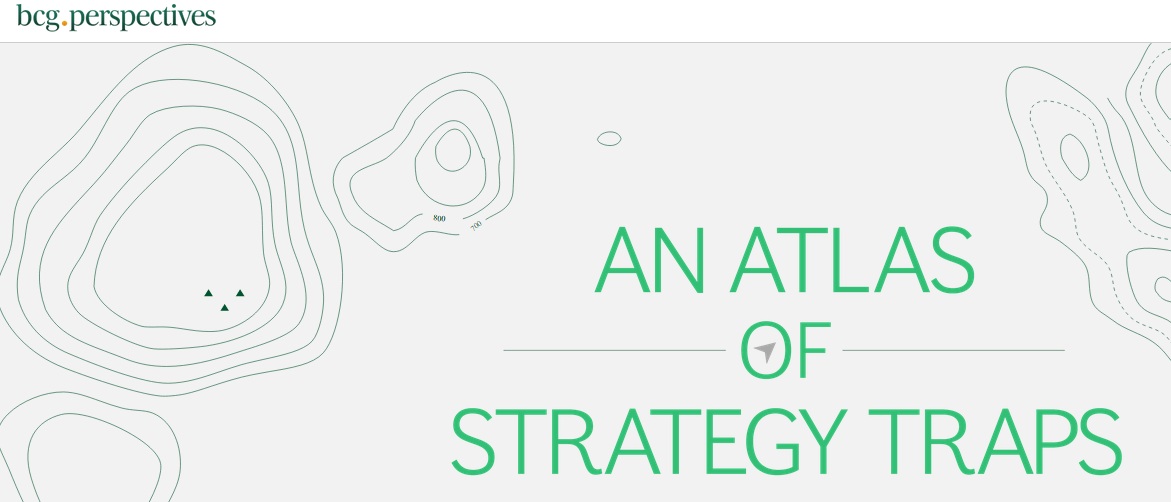
Tell a story
Consulting is about telling stories. BCG (known for their creativity, dating back to Bruce Henderson days) tells strategy stories using historical figures and recent business examples to craft their arguments:
1b. Combing the Ocean here. BCG tells the story of Alexander the Great and how his 11 year campaigned created a huge empire, that eventually collapsed a mere 3 years after his death. The business case is of Danone (yes, yogurt) and how they smartly culled their portfolio of non-core businesses and stopped “combing the ocean” and applied their efforts in a smarter way.
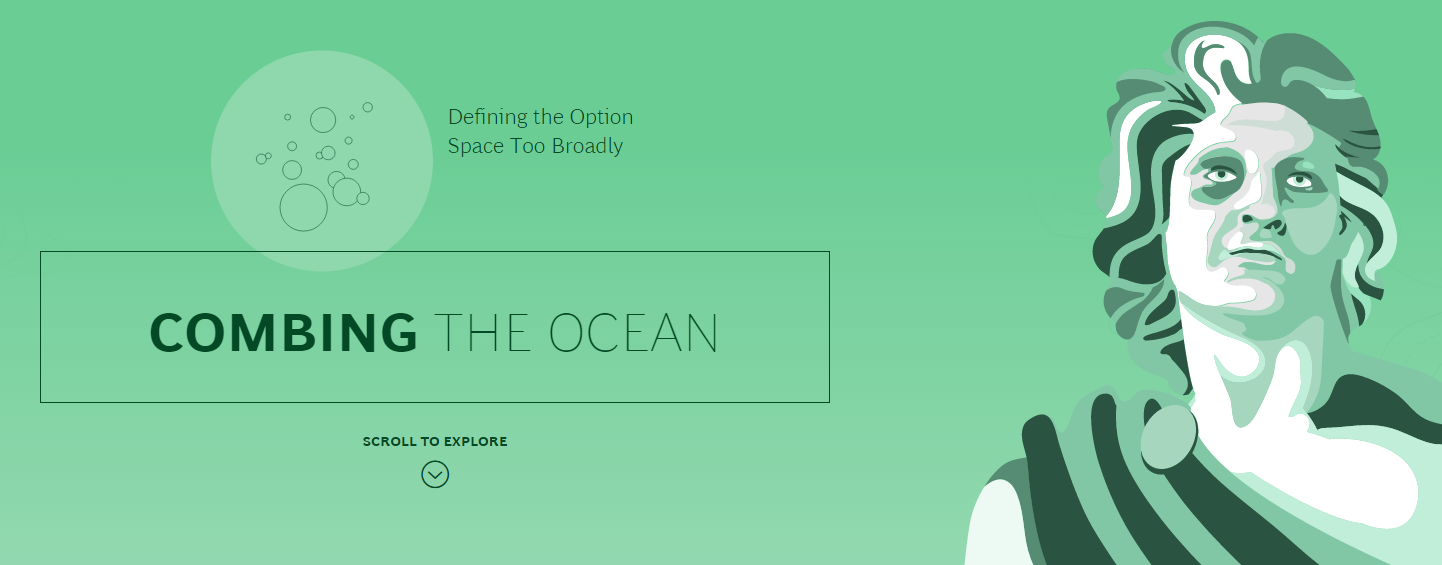
2a. Trapped in the past here. Apparently, “Big Alex” MacDonald was successful gold prospector and investor who owned 75 mines at the peak of the California Gold Rush. He kept “doubling down” on his investment even though most of the gold had been discovered. He was trapped in the past, and died almost penniless.
The modern day analogy may be the global pharmaceutical industry which has suffered from diminishing returns on research productivity; in short, they don’t have any blockbuster drug discoveries. Pharma trapped in the past.
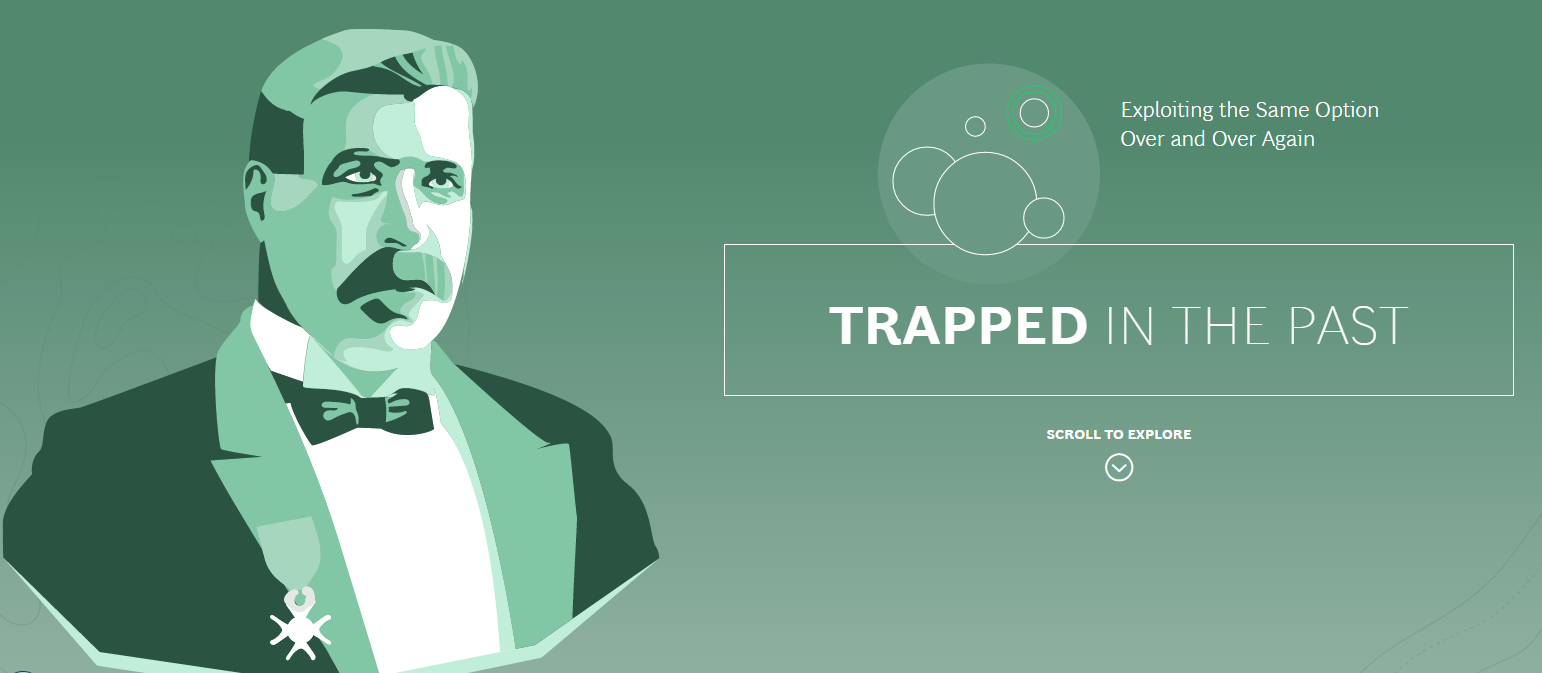
5b. Forgetful wanderer here – Francisco Vazquez de Coronado, a Spanish explorer, was looking for the 7 cities of gold in the 1500s in present-day southwest United States. He followed so many different leads, rumors, twists-and-turns that he ended up in Kansas with nothing to show for it. Think: dot-com bust of 2000.
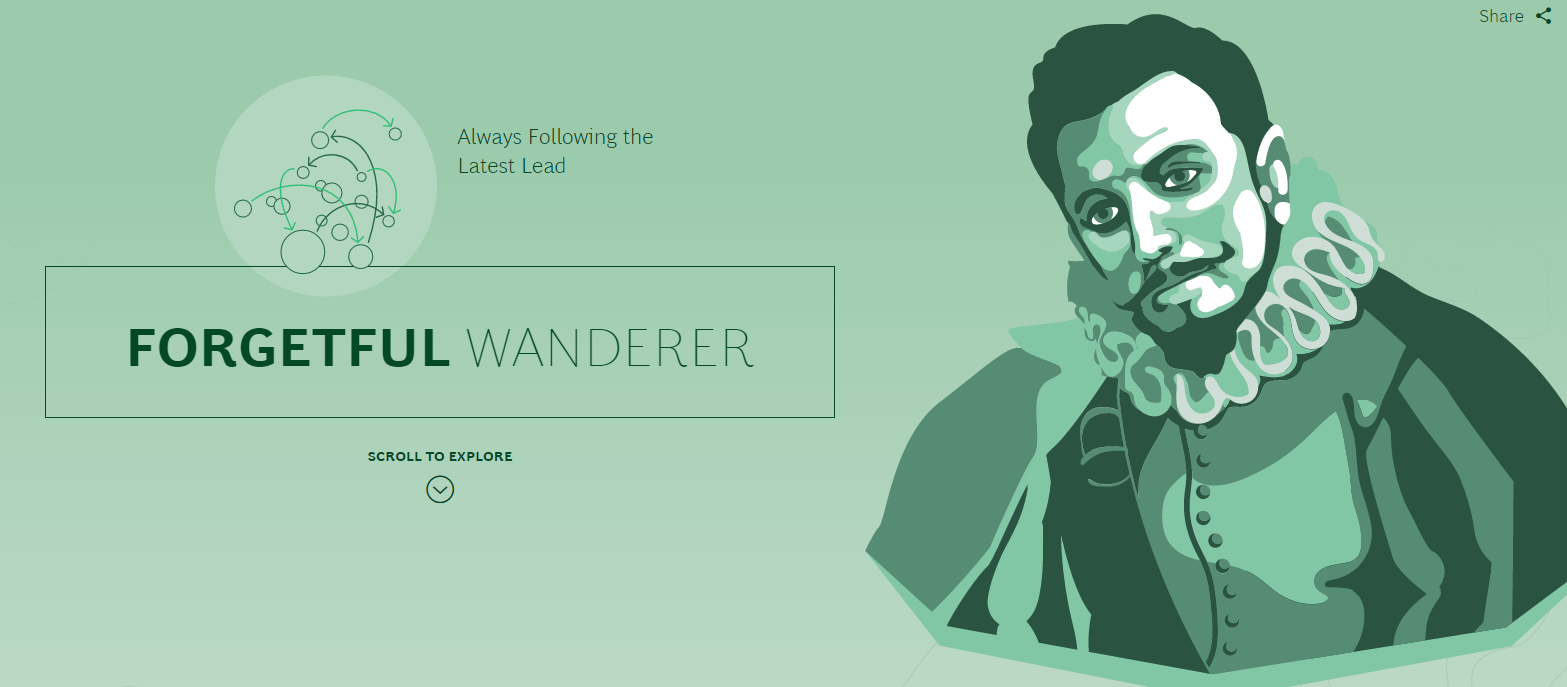
Sirens and Lighthouses
Like any good consultant, there are best practices and leading indicators to help steer you to the right path. They poetically describe these as Sirens (dangerous and beautiful creatures that would lure sailors to their death) and Lighthouses to guide your way safely.
The way they have integrated design, infographics, storytelling, and research makes this content super-memorable and engaging, at least for management geeks like me. Will tool around the BCG website more – but it’s a sunny Sunday afternoon here – going for a 6 mile walk with my wife. Be good.

